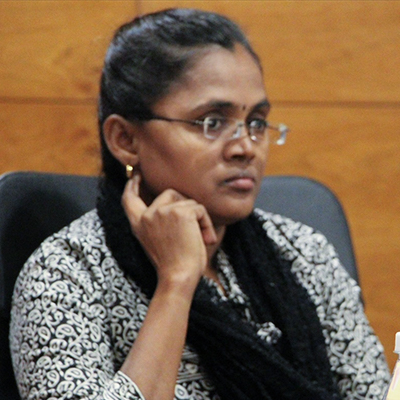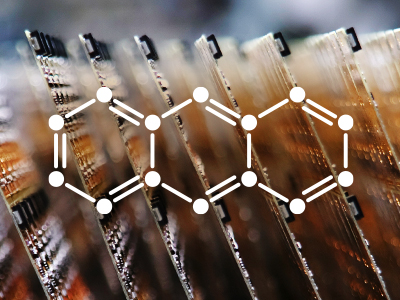The POPs Regulation bans or restricts the use of persistent organic pollutants in both chemical Products and articles. Persistent organic pollutants (POPs) have particularly serious health and environmental properties. They are regulated worldwide by the Stockholm Convention and the Aarhus Protocol. These international treaties are implemented in the European Union by the POPs Regulation.
Legislation
The Stockholm Convention (or “POPs Convention”) and the Aarhus Protocol (or “POPs Protocol) are two pieces of international legislation that have the same objectives: the reduction, control, and elimination of emissions of POPs into the environment. Within the European Union, these initiatives have been translated into the consolidated version of European Regulation (EU) 2019/1021 (or “POPs Regulation”) of the European Parliament and of the Council of 20 June 2019 on persistent organic pollutants. This version incorporates all the amendments and corrigenda to the POPs Regulation. This new regulation is a recast of Regulation (EC) No 850/2004 of the European Parliament and of the Council of 29 April 2004 on persistent organic pollutants and amending Directive 79/117/EEC.

The Stockholm Convention
The Stockholm Convention on POPs is a multilateral agreement to protect human health and the environment that was adopted in May 2001 and signed by over 150 countries. It entered into force on May 17, 2004. The legislation aimed to preserve natural resources, control pollution, and protect from several other environmental issues by focusing on eliminating or reducing the release of POPs. It set up a system for tackling additional chemicals identified as unacceptably hazardous. Ultimately, the Convention points out the way to a future free of dangerous POPs and promises to reshape the economy’s reliance on toxic chemicals.
The Aarhus Protocol
The Protocol on POPs from the regional United Nations Economic Commission for Europe (UNECE) Convention on Long-Range Transboundary Air Pollution (CLRTAP) was opened for signatures in June 1998 and entered into force on 23 October 2003. The Executive Body adopted ”The 1998 Aarhus Protocol” in Aarhus, Denmark on June 24, 1998. It focuses on a list of 16 substances that have been singled out according to agreed risk criteria. The substances comprise eleven pesticides, two industrial chemicals, and three by-products/contaminants. The ultimate objective of the protocol is to eliminate any discharges, emissions, and losses of POPs. The Protocol also bans the production and use of some products outright (aldrin, chlordane, chlordecone, dieldrin, endrin, hexabromobiphenyl, mirex, and toxaphene).
List of POPs Categories
The European Chemical Agency (ECHA) supports the Commission and the Member States in identifying new POPs and carries out consultations during the identification process for substances that have been proposed by the Commission.
- Endosulfan and its Isomers (Group)
- Hexabromodiphenyl ether (Group)
- Pentabromodiphenyl ether (HBCDD)
- Heptabromodiphenyl ether (Group)
- Tetrabromodiphenyl ether (Group)
- Bis(pentabromophenyl) ether (decabromodiphenyl ether, decaBDE)
- Perfluorooctane sulfonic acid (PFOS) and PFOS derivatives
- Dichlorodiphenyltrichloroethane (DDT)
Relationship between REACH and POP regulations
The EU Registration, Evaluation, and Authorisation of Chemicals (REACH) Regulation (EC) 1907/2006 has a broader scope and more objectives than the above POP regulations, but they share the goal of banning or restricting dangerous chemical substances. The restrictions in Annex XVII of REACH are very similar to those in Annex I of the POPs regulation. A proposal on POPs, accepted as part of the UNEP conventions and protocols, is added to the POPs regulation.
The POPs Regulation aims to protect human health and the environment with specific control measures that:
- Prohibit or severely restrict the production, placing on the market and use of POPs.
- Minimize the environmental release of POPs that are formed as industrial by-products.
- Make sure that stockpiles of restricted POPs are safely managed.
- Ensure the environmentally sound disposal of waste consisting of or contaminated by POPs.
Proposals for new POPs
For a new substance to be included under the POPs Regulation, it needs to be listed under the Stockholm Convention or the POPs Protocol. Any party to the Stockholm Convention, including the EU, can submit a proposal to add a new persistent organic pollutant to the annexes of the Convention. EU Member States can do this by submitting their proposals to the European Commission. Their proposals must enable the substance’s properties to be assessed against screening criteria listed in Annex D to the Convention. The POP Review Committee (POPRC), an expert body under the Stockholm Convention, evaluates the submitted proposals. If it concludes that screening criteria are met, it launches a global collection of information on further hazards, risks, uses, and exposures. The POPRC uses this information to compile a risk profile as defined in Annex E to the Convention.
POP Risk Assessment
The POPRC carefully evaluates the risk profile of each substance to determine if global action is warranted. Once a decision is made to move forward, a worldwide call for information is initiated by the POPRC. They seek input on various aspects like risk management solutions, alternatives, socioeconomic factors, and existing measures already in place. This information is then utilized by the POPRC to conduct a comprehensive risk management evaluation. Finally, the POPRC provides its recommendation to the Conference of the Parties regarding the potential listing of the substance under the Convention.
Enforcement
ECHA oversees a Forum for Exchange of Information on Enforcement, commonly referred to as “the Forum,” which covers the enforcement of various programs such as REACH, Classification, Labelling and Packaging Regulation (CLP), Prior Informed Consent Regulation (PIC), and POP. Local inspectors in member states use the Forum to receive their marching orders in terms of enforcement practices, methodology, and analytical methods. Enforcement of POPs and Biocidal Products regulations means, generally, a range of actions that national authorities initiate to verify the compliance of the duty holders with these legislations. Therefore each member state must ensure that the official system of controls and also lay down legislation specifying penalties for non-compliance with the provisions of POPs.
Timeline of POPs Regulation up to 2019
- Jun 6, 2019 – Publication of the Regulation (EU) 2019/1021
- May 17, 2004 – The Stockholm Convention on Persistent Organic Pollutants entered into force
- Apr 30, 2004 – Publication of the Regulation EC No. 850/2004 of the European Parliament and of the Council of 29 April 2004 on persistent organic pollutants and amending Directive 79/117/EEC
- May 22, 2001 – Adoption of the Stockholm Convention on Persistent Organic Pollutants
- Jun 24, 1998 – Aarhus Protocol on Persistent Organic Pollutants (POPs)
- Jun 1, 1998 – First meeting of the INC, Montreal, Canada – Develop an internationally binding instrument for implementing international action on POPs & Establish the Criteria Expert Group (CEG)
- Feb 1, 1997 – Expert group to develop criteria and a procedure for identifying additional POPs as candidates for future international action – The UNEP (United Nations Environmental Programme) – Governing Council in its decision 19/13C
- Jun 1, 1996 – Measures to reduce and/or eliminate the emissions or discharges from the 12 initial POPs
- May 1, 1995 – An initial list of 12 POPs – The Governing Council of UNEP (UN Environment Programme) requested in its decision 18/32 that: 1) An international assessment process be undertaken of an initial list of 12 POPs. 2) The Intergovernmental Forum on Chemical Safety (IFCS) develop recommendations on international action for consideration by UNEP Governing Council and World Health Assembly no later than 1997.
- Mar 16, 1983 – The Geneva Convention on Long-Range Transboundary Air Pollution (LRTAP) entered into force
- Nov 13, 1979 – Signature of Geneva Convention on Long-Range Transboundary Air Pollution (LRTAP)
Conclusion
Various pieces of legislation have been consolidated under the EU POPs Regulation in an effort to curb the use of persistent organic pollutants. Companies involved in the manufacture, use, or management of POPs within the EU should review the recast regulation for potential impacts on their operations. Ultimately, all companies should look for ways to eliminate the presence of POPs from supply chains, final products, and waste streams for the benefit of human health and the environment.





